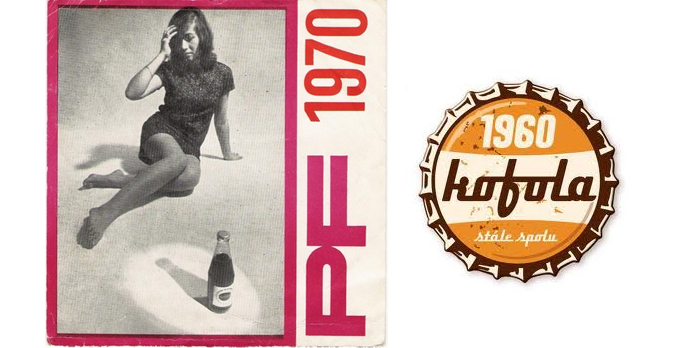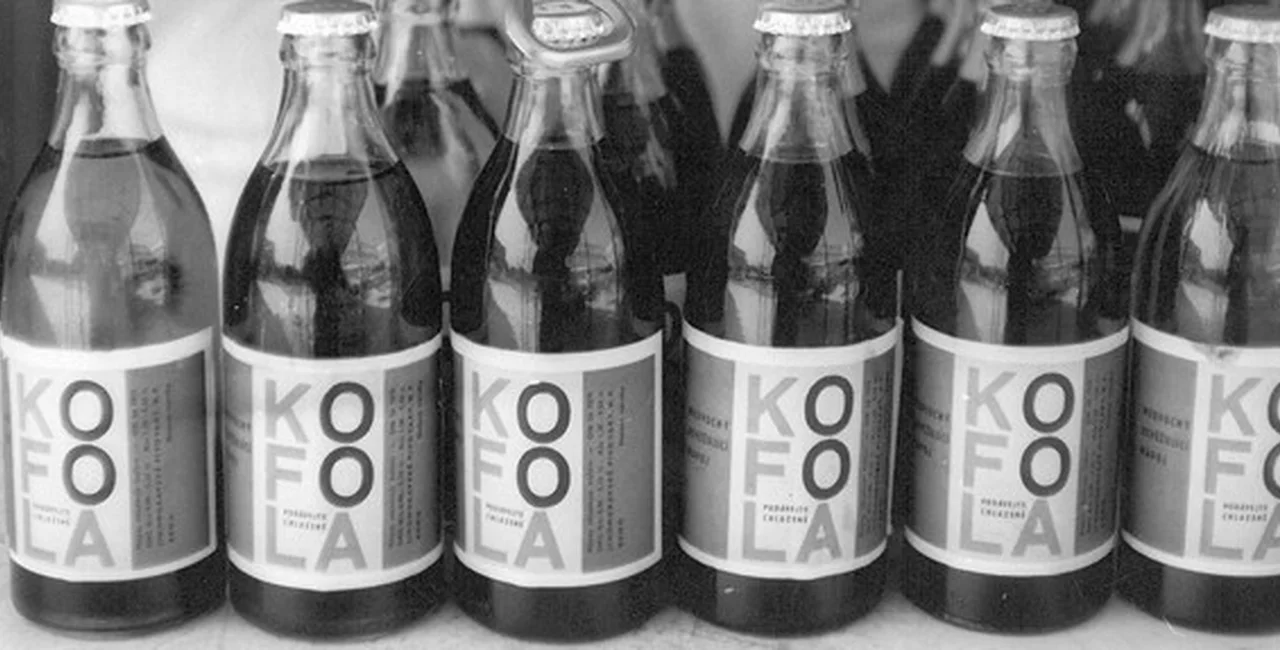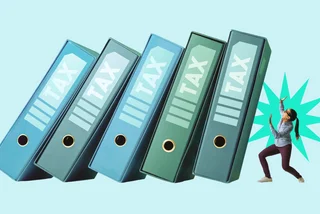The soft-drink Kofola is one of the most famous Czech brands. Its stylized logo is as much a part of the local commercial landscape as Škoda, Baťa, or Pilsner Urquell. Yet all these companies started before communism, even before Czechoslovakia was formed. Kofola, on the other hand, emerged during the former regime and despite some setbacks has remained one of the country’s best loved products.
From Anti-Imperialist Drink to Soft-Drink Empire
In 1959, chemist Zdeněk Blažek was tasked by the company Galena with finding a way to use surplus caffeine and develop an alternative to ‘West imperialistic Coca-Cola’. The fizzy symbol of capitalism was certainly available during the communist period, but it was expensive and available from Tuzex or restaurants. Blažek’s product was the syrup Kofo, made from herbal ingredients, fruit extracts and caffeine. Kofo was added to carbonated water, creating Kofola, which sold for half the price of foreign colas and was more widely distributed. This undoubtedly gave the drink a huge advantage in the once tightly controlled market.
Despite the lack of a market economy, Kofola engaged in some simple marketing during communism, such as this New Year’s Greeting card.

The image of an attractive young woman suggests that the ideas about product promotion the company had back in the seventies were not too far away from the West at the time – i.e. youth and beauty sells, even if the women looks somewhat melancholy.
The transition to an open economy brought greater competition from foreign brands, namely in the reduction of their prices. This change, along with the euphoria of shedding communism, the association of Coca Cola and Pepsi with the West, the allure of these formerly restricted products, and finally Kofola’s association with the bad old days all contributed to a decline in Kofola’s sales.
The slump was short lived. In 2002, Santa, a drinks company owned by Greek expatriate Kostas Samaras, acquired both the brand name and the recipe from American pharmaceutical firm IVAX for 215 million CZK. Today, Kofola is one of the biggest drink producers in central Europe. It is certainly the biggest domestic soft drink maker, controlling 32% of the market, which places it in second place behind Coca Cola which has about 35%. Pepsi’s share is only about half that number. All from a product considered commercially dead two decades ago.
The Path to Resurrection
The story of Santa is as interesting as the brand they own. Kostas Samaras left his native Greece as an 8 year-old boy in 1948 during the country’s civil war, which raged from 1946 to 1949. He was separated from his parents and placed in a Czechoslovakian orphanage.
Studying agricultural engineering at university, Samaras saw little future in socialist agriculture techniques after the revolution, and switched to running a company which imported goods from Greece. The venture was not a success and he nearly lost all of the property which he’d put into the company.
In 1993 Samaras, now a father, bought a soda drink plant in Krnova. His son, Jannis, the current head of the company, left university to work with his father. Originally, the plant made and bottled a lemon-flavored syrup, later juices and soda. With the acquisition of Kofola, the company has become one of the leading Czech brands.
Various media accounts portray Jannis as a humble and reserved man. Stories describe that he doesn’t wear a suit to work, and when he was named the businessperson of the year in February he had to borrow a tuxedo for the award ceremony. There is a sense that this down-to-earth image is part of Kofola’s appeal.
The Recipe for Success
The recipe for the drink remains a secret, with only five people in the company knowing the drink’s ingredients. Václav Klaus also knows. It’s not some presidential privilege. The company granted him knowledge as a seventieth birthday present.
Despite being a secret, key ingredients are known, even if their proportions aren’t. Apart from sugar, the drink contains a mix of spices, citrus extracts and extracts from sweet woods and the leaves of blackberries and raspberries. The company claims that Kofola has less sugar than other colas and no phosphoric acid. But it does contain more caffeine.
Taste of Love / A New Recipe for Success / Love for Sale
An added ingredient to the company’s rebirth is its modern marketing campaigns, which paradoxically rely on nostalgia and tradition. Using the slogan Když ji miluješ, není co řešit (When you love her, nothing else matters), the company has rebranded itself as a quirky somewhat irreverent product, producing what have been some very well received ads.
The appeal to days gone by was the result of market research, as explained by former chairman of the board René Sommer. He said in the interview at the link that people lived through many terrible things, but they recall some positive events too, and one of those might be drinking Kofola as a child.
This ad, shot for the companies fiftieth anniversary, taps into a certain nostalgia for the sixties. It shows how a chemist is trying to discover the literal chemistry of love but discovers Kofola instead.
Another ad focused more directly on the theme of young love.
And sometimes the company isn’t afraid to venture into taboo topics.
Some ads have taken a different approach. The Christmas ad, which was very well received, and according to Sommer, viewed by people of a sign that Christmas was coming, makes no reference to the drink until the end.
It is based on a Czech saying that if you fast over Christmas Eve, you will see the golden pig at dinner time, which is what the father is explaining to his daughter. As he cuts down the tree she asks him what the pig looks like, eventually announcing that she can already see him.
Broadening Tastes
Like other soft drink producers, Kofola has responded to changing and expanding palettes of consumers by introducing new varieties. The other types include Kofola bez cukru, which is sugar-free, Kofola Citrus, Kofola Extra Bylinková which includes gentian, dandylion and peppermint in addition to the regular herbs, and a sour cherry Kofola called Višnová.
The company has also started to sell the drink in cans to keep up with demand, and have expanded into other drinks such as the mineral water Rajec and energy drink Semtex and Erektus.
The proven success of Kofola, along with changing tastes and an interest in local products, could be opening the way for other local soft drinks, known as limonáda or limča, irrespective of whether they are lemon flavored.
One of the most commonly available is malinovka which as you know no doubt guessed is a fizzy raspberry drink. After some decrease in sales, interest in soft drinks has started to rise again. Perhaps the increase is the stricter rules concerning drunk driving mixed with the retro appeal of these products. However, it seems unlikely that the soft drink market is going to make a dent in Czech beer consumption, which is still the highest per capita in the world at about 150 liters per person annually.
What do you think of Kofola?
Related articles
- Farewell Fake Rum? A Short History of the Endangered Czech Spirit
- Cocktail Emporium with Prague-Themed Drinks Opens on Wenceslas Square
- Prague Named among Top 10 Vegan-Friendly Capitals In 2017
- Czech Republic Will Continue to Fight Inferior Food Quality
- Take a Look Inside Prague’s New Temple For Meat Lovers












 Reading time: 6 minutes
Reading time: 6 minutes 




































